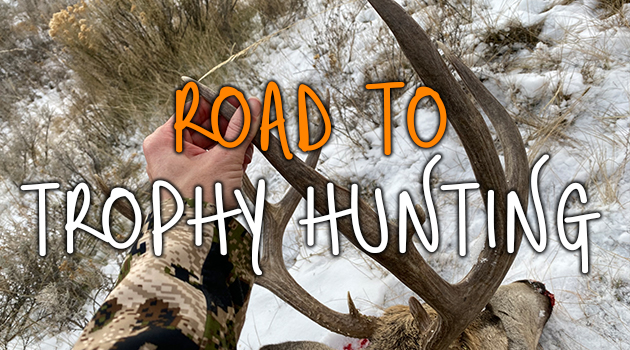
Guest Author: Lindsay Wion
“Trophy hunter” is not a descriptor I thought I’d ever be comfortable with, and frankly a term I’m still learning to accept as a genuine self-label. Alas, I can no longer deny it. I am a trophy hunter. It certainly wasn’t the target of my trajectory when I began my hunting journey almost ten years ago, but it snuck up on me in the most frustrating and exhilarating of ways. The more I learned, the more I observed, the more time I spent in the field, the more I found myself veering towards restraint and passing on animals that didn’t just quite meet the mark.
Hunting was not a part of my reality growing up in urban west Texas. However, I was raised in a family that taught me to appreciate the outdoors and the experiences our natural world provides. My parents introduced me to activities like hiking, skiing and scuba diving. Hunting was something I was clueless about. Like the majority I didn’t give a second thought as to where the meat on my dinner table came from. Anything firearms related was totally foreign to me as a youth. My mom was nervous when my Dad brought home a civil war era cap and ball pistol to display amongst his antiques. The notion of having a functioning firearm would have been absurd at the time! The only exposure I had to shooting and safe firearms handling was through summer camp activities. These cumulative experiences did have their impact. My passion for the outdoors was sparked and really started to take shape when I committed to a wildlife biology program at Colorado State University. At the time, it felt like a decision made on a whim, but I think it was truly one of those choices a person’s life leads them to without conscious knowledge.

Through my undergraduate education, the value and role of hunting as a conservation tool for wildlife management became apparent. I found myself enamored by the words and legacy of conservation pioneers like Aldo Leopold. It dawned on me that I was amongst a group of peers the majority of whom were like me; lacking any hunting background and on track to enter an industry which relies heavily on consumptive use of wildlife for funding and data collection. During this time I gained some early exposure to hunting. I tagged along on a whitetail deer hunt in Texas. It was the perfect introductory experience to witness. There was minimal suffering and I discovered I really enjoyed eating venison. I felt like a new member of some exclusive club that doesn’t rely on a grocery store to enjoy quality protein at home. The idea of knowing exactly where the meat I was eating came from really started to take hold.
When I purchased my first hunting license four years later, a cow elk tag, my primary motivation was access to healthy meat that was truly field to fork. I felt immense pressure to make a clean, ethical kill minimizing any suffering. With the help of a patient mentor and a borrowed rifle, I worked on my shooting skills and even hunted squirrels to break the ice. The surprisingly tasty squirrel stew further fueled my desire to hunt big game.
Just as hunters experienced and novice alike often do, I ate tag soup the first couple of years, but I was bound and determined. I hadn’t even had the chance to put the crosshairs on a big game animal, let alone find myself in a moment of decision to squeeze the trigger or not. I wasn’t entirely sure I could go through with it or how I would react when the opportunity did present itself. After relocating to Wyoming, I finally got my chance. With a general deer license in my pocket, I woke up one morning and hopped in the truck with a friend in hopes of filling my freezer with a doe deer. We were about to call it a morning, when I spotted my chance. A group of does was about to cross a fence onto a large tract of public land. We quickly, and quietly got in position. The deer jumped the fence. I located a safe target in my scope, did my best to get a handle on my breathing and without hesitation squeezed the trigger. The deer didn’t step 5 yards before succumbing to a single shot from my Savage Arms Lady Hunter in 6.5 Creedmoor. I was relieved, excited and humbled. When I walked up to the doe, I put my hand on its body, closed my eyes and said “thank you.” I was grateful my preparation had paid off. Tears were definitely shed as I was overwhelmed by a combination of excitement and sadness. This was a moment I had envisioned for years now. Soon the deer was broken down and on it’s journey into my freezer.
The following year, I got my first taste of buck hunting. I harvested a nice public land whitetail all on my own. After spotting and patterning a particular deer, I hunted the same spot for days waiting for the right opportunity. It came down to the wire, but I successfully harvested the deer on the last evening of the season. I was surprised by how much pleasure I found in the challenge of finding a way to outsmart a single animal. It was a puzzle to find the vulnerability in it’s daily activity that I could take advantage of.

Fast forward two years. I was lucky enough to draw a Wyoming limited quota deer tag. I knew I didn’t want to take a forked horn, not because it wasn’t a trophy, but because harvesting a more mature deer was more beneficial to the population. The license would allow me to harvest a whitetail or a mule deer. With one whitetail buck under my belt, I made it my focus to hunt for a 4×4 mule deer buck. The season was quickly coming to a close. I had located a nontypical whitetail that I had planned to return to if I couldn’t locate a mature mule deer to harvest. I was literally putting a stalk on this whitetail buck when I crossed paths with a 6×5 mule deer buck at 50 yards. The buck froze, I froze, momentarily, then quickly got in position to take a shot at the buck. Just like that I harvested my first mule deer buck and was infected with the mule deer bug! His cheaters gave him some character and fit the mark of a 4×4 that I was looking for, but he was not a giant. I didn’t care. It ate just as well and that’s all that really still mattered to me.
Over the next few years, the draw results allowed me to continue hunting deer in the same area. This gave me an advantage year after year as I became more familiar with the terrain and movement of deer in the drainage. I couldn’t quite put my finger on it, but for some reason I was spending more days and more time in the field each consecutive year. I made mistakes, a lot of mistakes. I second guessed my judgement constantly (still do). Each season I found myself walking away from abundant opportunities to squeeze the trigger and fill the freezer. I’d drive home frustrated and dissatisfied yet also that much more driven to find just what I was looking for, even if I wasn’t sure exactly what that was. I found myself in a vicious cycle through my ongoing internal dialogue. The conservationist and meat hunter in me was pushing to notch my license on any legal animal before the season closed. The emerging trophy hunter was fighting back, pushing me to keep searching, keep glassing and remain patient, determined to locate and hunt a buck that would top the buck from the previous year.

Last season, it became unavoidable. I couldn’t deny reality any longer. I was trophy hunting. Twice I passed on a big pot-bellied 3×4 buck. Clearly a mature, older deer. I had a high-odds shot opportunity with an easy pack-out and I walked away with only the slightest hesitation. A few days later, I missed a 170s class typical buck with an extra in-line antler. I was sick to my stomach, frustrated and angry with myself for blowing it! I ended up taking the next two days off work in an effort to relocate the deer. My hard work paid off as I did find the buck again. We surprised each other and I bumped the buck by happenstance. Inexperience and exuberance worked in the deer’s favor and he bounded off not to be seen again that season. I hunted to the very end searching for a buck of similar caliber. In fact my son spent his first Halloween butchering the deer I harvested as shooting light slipped away for the season. I think that’s when I realized the term “trophy hunter” now applied to me.

Now I am actively seeking opportunities to fuel the fire of others who want partake in the hunting experience, whatever their motivations may be. I have had a variety of hunting mentors from all different schools of thought; straight meat hunters, avid trophy hunters and hunters whose mindset falls somewhere in between. I want to give a special shout out to the Wyoming Women’s Antelope Hunt. I was the grateful and proud recipient of one of the event’s hunt scholarships. The knowledge I’ve gained from this diversity of mentors is invaluable.
My journey to becoming a trophy hunter has been rewarding for me on so many levels. It’s easy to focus on the success I have enjoyed so far, but I think I’ve gained more from the errors I’ve made and the things I’ve observed along the way. I have gained confidence in skill sets I couldn’t have fathomed. I don’t think the latter would have developed had I not shifted focus from purely meat hunting to seeking trophy quality animals. Anyone can fill a tag with enough road time and a little luck, but it takes knowledge, determination and grit to be a successful trophy hunter.
 Eastmans' Official Blog | Mule Deer, Antelope, Elk Hunting and Bowhunting Magazine | Eastmans' Hunting Journals
Eastmans' Official Blog | Mule Deer, Antelope, Elk Hunting and Bowhunting Magazine | Eastmans' Hunting Journals

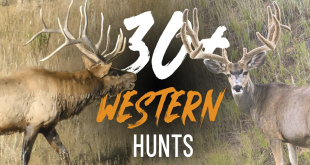
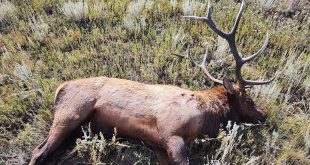
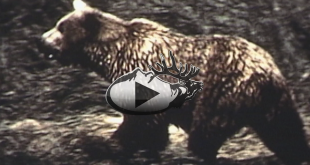
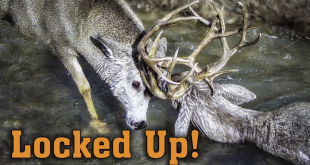
Very well written, thank you for sharing your journey